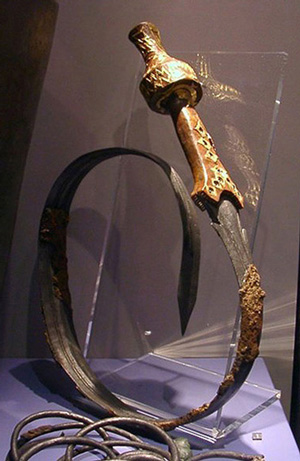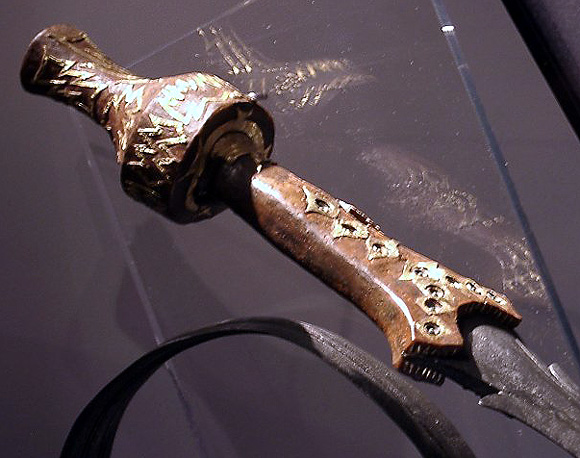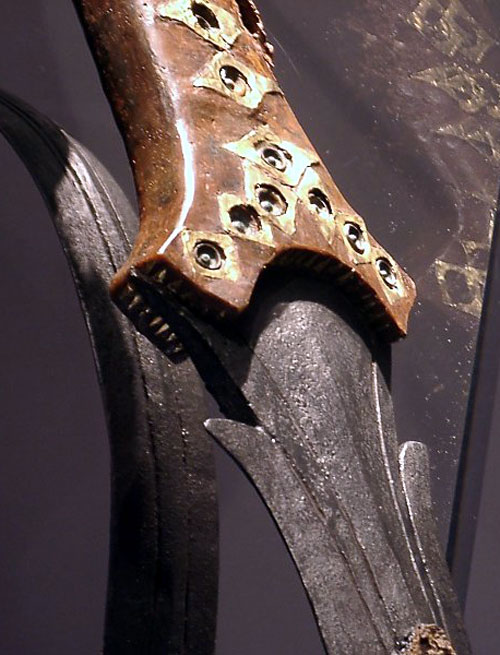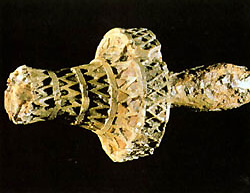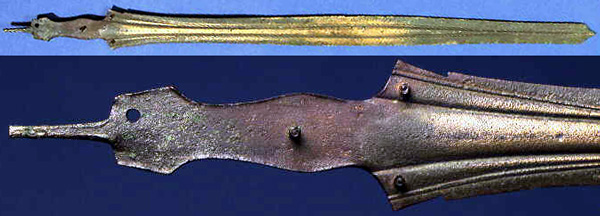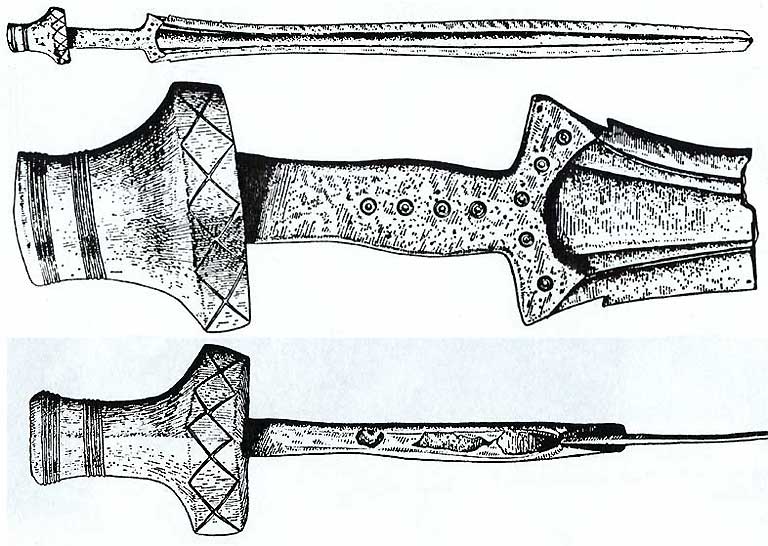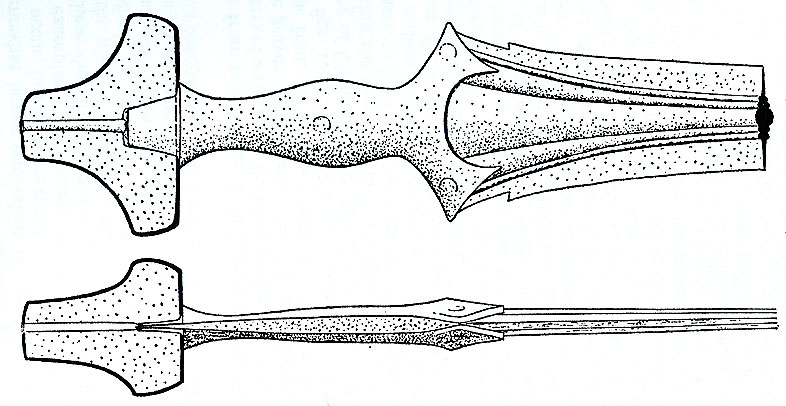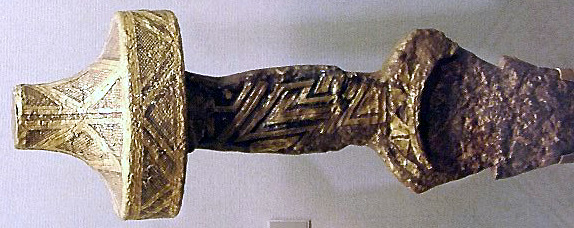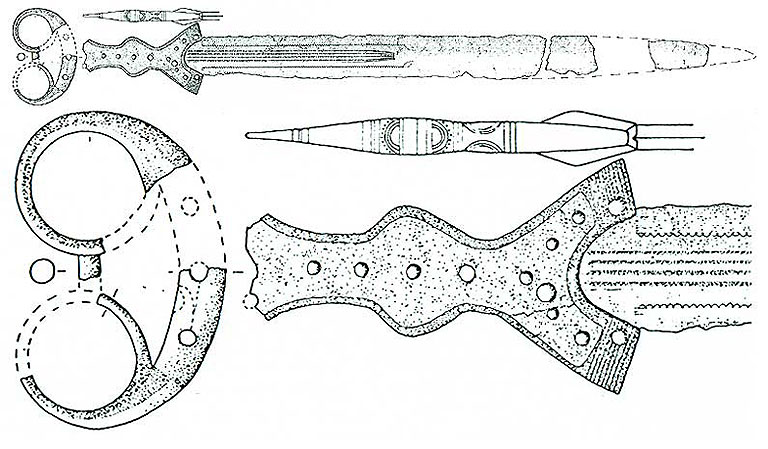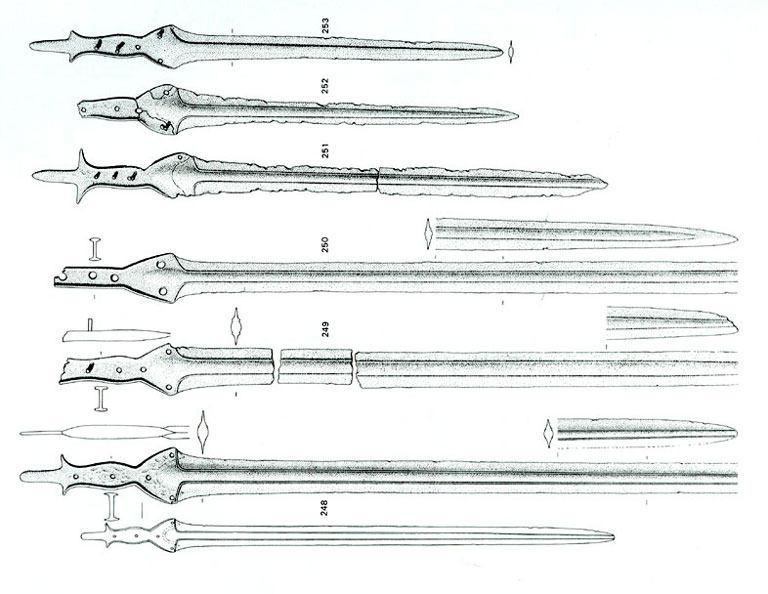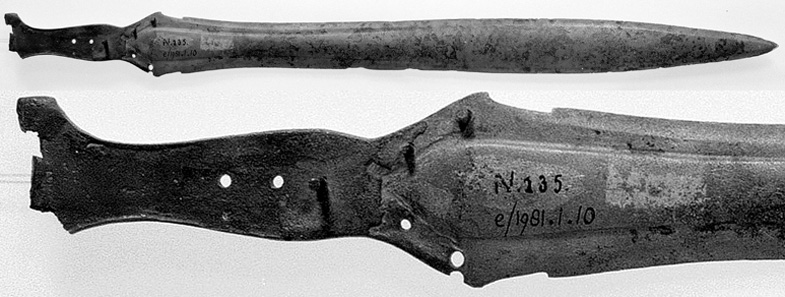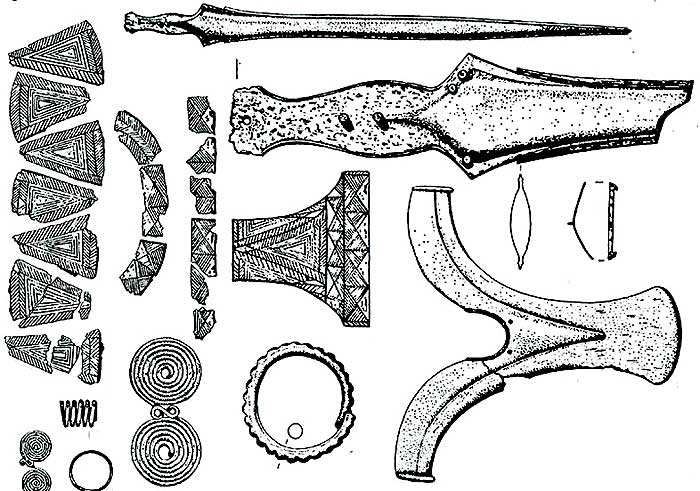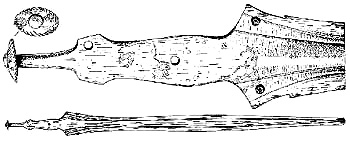Posts: 820 Location: Texas
Sat 26 Feb, 2005 7:13 pm
I have a partial copy of a monograph by J.D. Cowen. It is entitled “The Hallstatt Sword of Bronze: on the Continent and in Britain.” While on the subject, I thought I would summarize some of his findings and post a few pictures of the Hallstatt C swords I have. The pictures come primarily from Jeroen’s site linked above, The Museum of London website and the Nederland Archeological center’s site:
http://www.museumoflondon.org.uk/
LINK
The Hallstatt swords (as well as the culture and archeological period) gets its name from the many graves from the type location along the shores of Lake Hallstatt in Austria. The Hallstatt period ranges from the 8th to the 5th centuries BC. The Hallstatt period is the beginning of the Iron Age in Europe and the first phase of the Celtic culture.
The design of Hallstatt swords clearly build upon the older flange-hilted swords in bronze. In fact they are the last of their kind to be made in bronze. It is this transitional phase (Hallstatt C) between bronze and Iron swords that gets much of the attention. During this period from about 720 B.C. to 600 B.C. both bronze and iron swords are found together. It is also at this time that Hallstatt swords begin to show their distinguishing characteristics:
1. The long blade is leaf-shaped and heavy, with a broad neck, and the greatest width unusually low down towards the point.
2. The ricasso is always short, with a notch greatly varying in depth.
3. The point is often terminated in a characteristic blunt triangular formation, of which the sides are drawn at an angle of 45 degrees to the axis of the blade; and is, accordingly, wholly inappropriate for employment in thrusting.
4. The tang itself always swells, sometimes quite sharply, to a point of greatest width somewhat below the center. It is, generally speaking, flat; that is without flanges. But a flanged effect is often produced by a slight dishing along the edges.
5. The most usual number of rivets is two, though one is not uncommon; three also occur, but more are exceptional. A peculiarity of their placing is that they tend to be grouped within the wider (that is the lower) end of the tang, leaving a blank space at the top below the pommel-piece.
6. One of the most obvious characteristics is what archeologists call the “pommel-piece.” It is an extension of the tang to fit inside the pommel with a rivet-hole, peg-clefts or hooks to attach and hold the pommel onto the sword hilt. While there were earlier bronze swords with tang extensions for the pommel (pommel tangs… see attachment), the Hallstatt swords were the first with clear design changes to try and fix the pommel to the tang.
The Hallstatt swords have been broken down into the shorter variety (the Gundlingen type) and the longer variety (the Mindelheim type). The shorter Gundlingen type is much more common in the archeological record. Cowen places the number of cataloged Gundlingen types at 240. Yet only 27 examples of the Mindelheim type were known at that time. It is tempting to see the shorter more plain Gundlingen type as an earlier form that developed into the longer more decorative Mindelheim type. However researchers believe that they are contemporary and reflect either a geographic distribution or a class division with the Gundlingen as the working sword of the foot-soldier and the and the Mindelheim as the cavalry sword of the noble class.
ks
 Attachment: 27.94 KB
Attachment: 27.94 KB

Gundlingen Type Sword reproduced in Cowen
 Attachment: 95.93 KB
Attachment: 95.93 KB
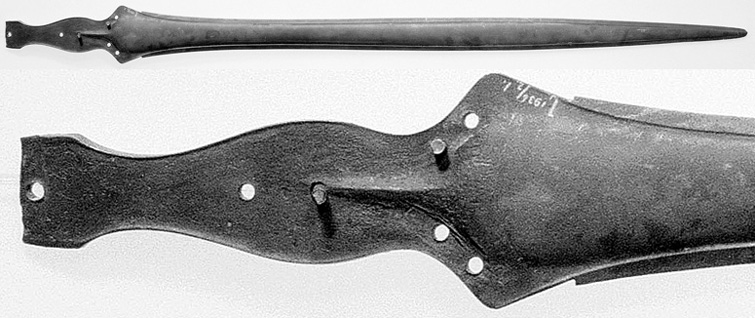
Classic Gundlingen Type
 Attachment: 97.12 KB
Attachment: 97.12 KB
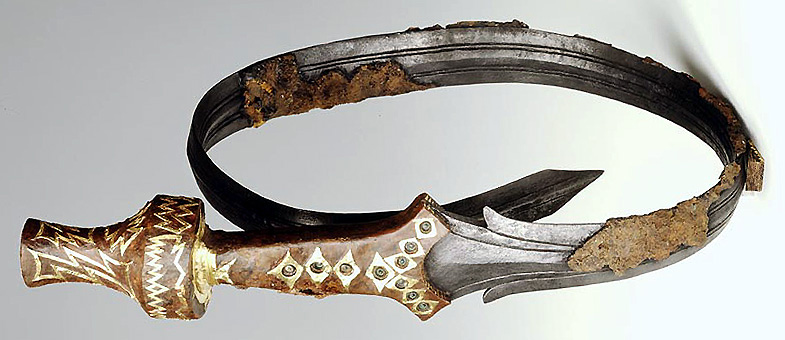
Mindelheim type "Chieftain of Oss" sword
